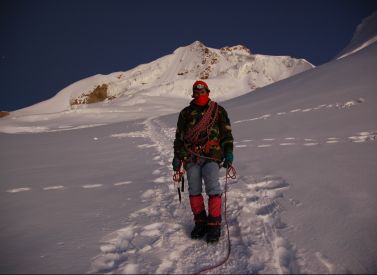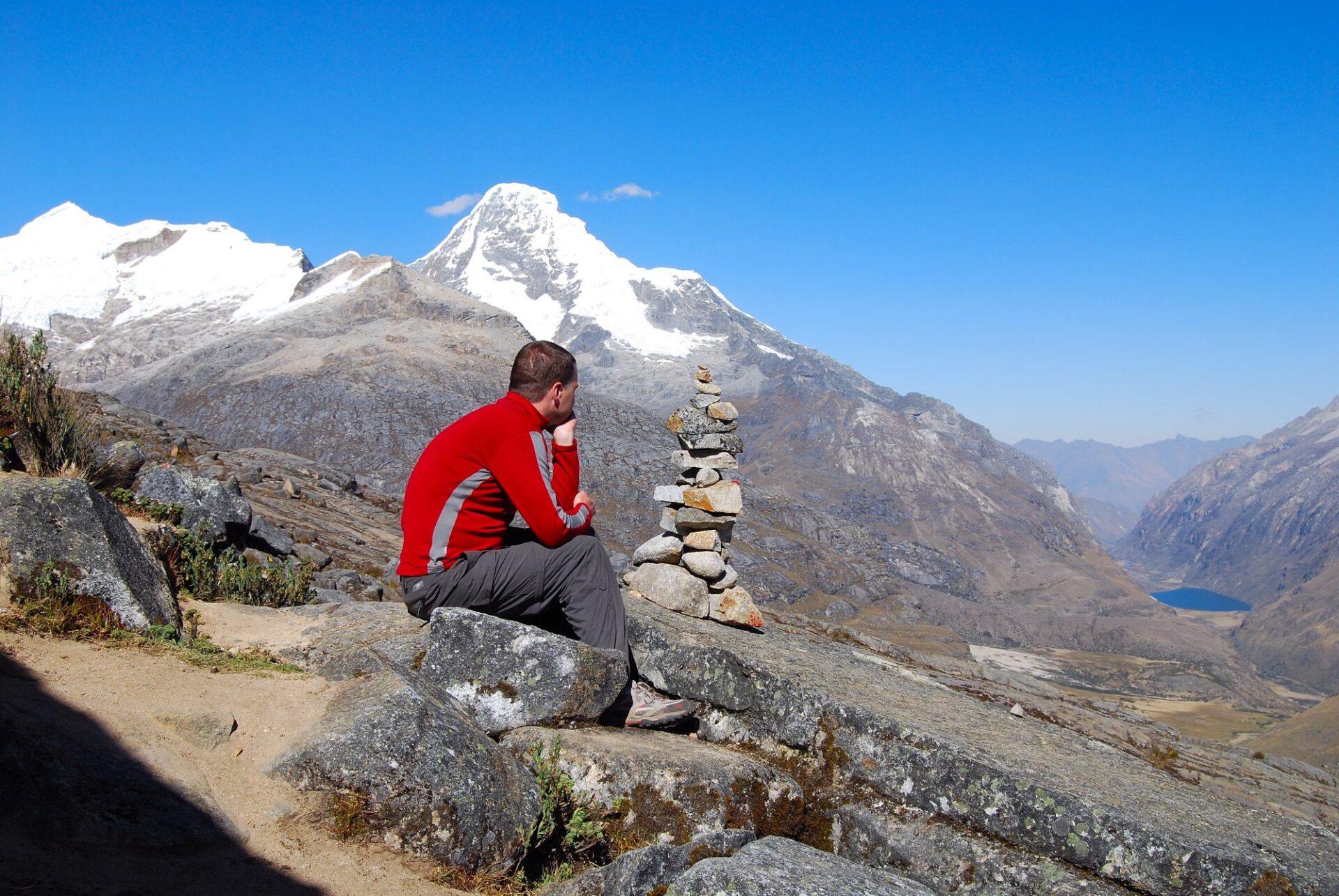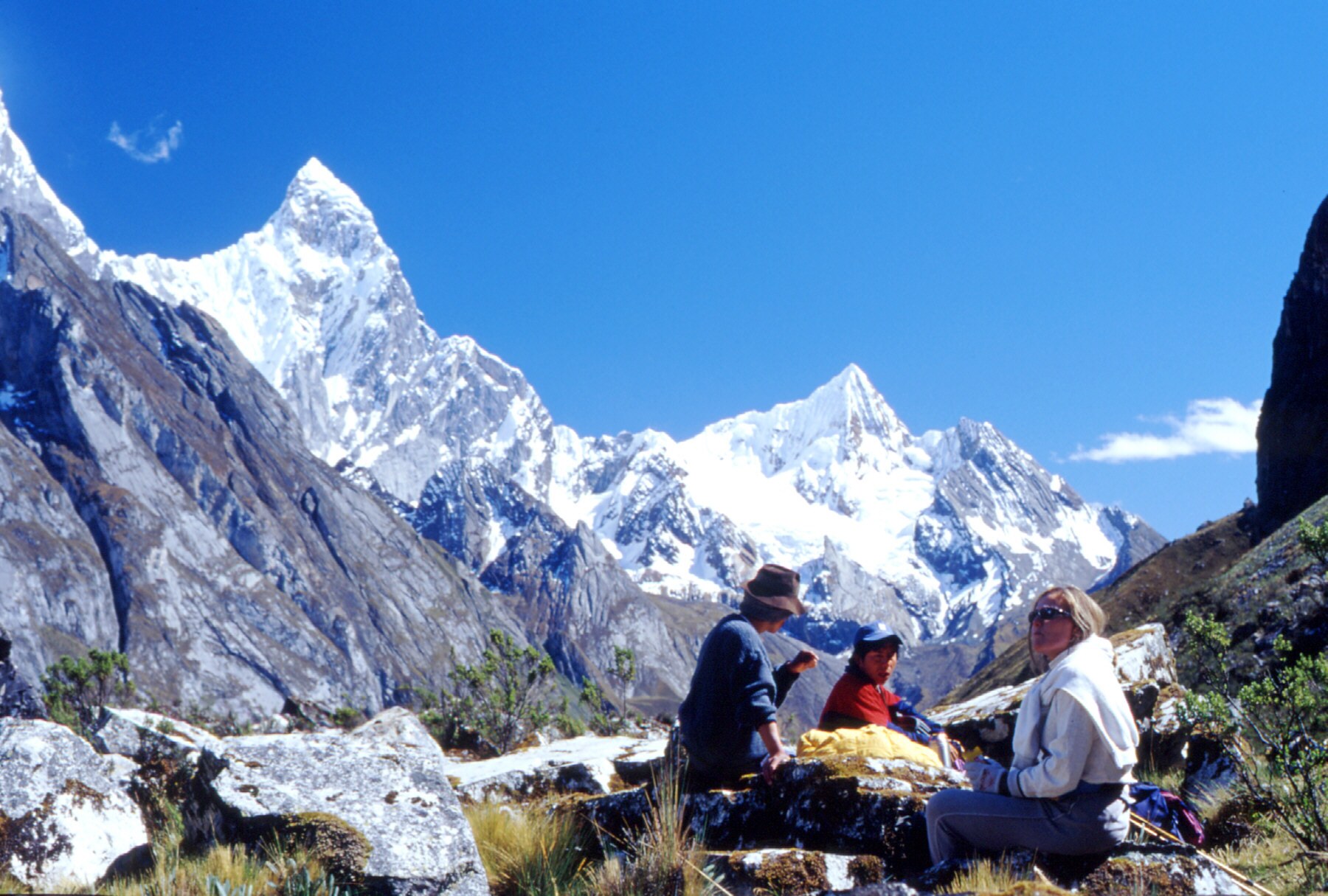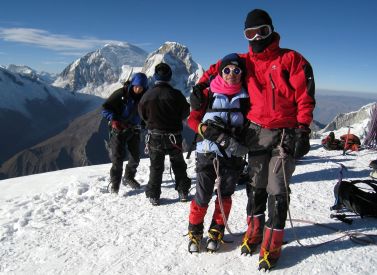
Route of the Condor, Huaraz Trekking
The Route of the Condor – trekking the wilderness in the Cordillera Blanca.
We take you trekking over the stunning passes of this dramatic mountain range near, Huaraz, Peru.
There’s also a chance to climb two of the Cordillera Blanca’s most attractive peaks, offering marvellous views.
No previous mountaineering experience is required to attempt the two peaks – Maparaju (5,326m/17,474ft) and Ishinca (5,530m/18,143ft) – climbing equipment is provided and instruction in its use is given by our mountain guides.
More on Huaraz trekking
Huaraz is a great base for exploring the area while acclimatising. You can go mountain biking in the nearby mountains or take a day trip to the 3,000 year-old archaeological site of Chavin de Huantar.
We ascend the broad Quebrada Quilcayhuanca valley, an awesome array of peaks appearing ahead.
Then, trekking over two high passes (5,100-5,350m/16,732-17,552ft) there are many opportunities to see the Andean condor.
Route of the Condor summits
From here we climb up the sweeping snow slopes of Maparaju, from whose summit there are amazing views of the Cordillera’s highest peaks to north and south, glacial lakes and farming land.
We continue over a 5,000m/16,404ft pass with an amazing 360-degree panorama of immense peaks, and head down into the Cojup valley.
From there we climb again towards the next pass and Ishinca peak (5,530m/18,143ft) for more stunning views, then descend to the moraine camp, and from here make our way back to Huaraz.
Trip Highlights
Print Share Download as PDF-
Trek off the beaten track: up the broad glaciated Quilcayhuanca valley
-
Trek the Cojup Valley
-
Trek the Ishinca valley
-
Climb two superb trekking peaks, Maparaju and Ishinca
-
Possibility to see the Andean condor
I would rate the Guide as 10/10.
The highlights were probably the summits, although the rest days after the summits were very nice.
Peter and Mary Green, trekking Huaraz
Full Itinerary
Day 1: Arrive Lima, transfer in to hotel
Join tour in Lima.
Day 2: Transfer to station for bus to Huaraz, arrival transfer to hotel (B)
We leave Lima early by public bus for a fascinating journey of contrasts that will end amid the towering high Andes at the small highland city of Huaraz. We head north through the coastal desert as far as Pativilca, then turn inland and begin our climb northeastward into the Andes. We follow the Fortaleza valley, the fertile cultivated river banks contrasting dramatically with the barren mountain sides. C
acti gradually give way to denser vegetation and then puna grassland as we ascend to the highest point on our journey, Conococha (4,050m/13,287ft).
We turn north into the Callejon de Huaylas and enter a different world, the huge snow peaks of the Cordillera Blanca dominating the landscape.
We arrive in Huaraz (3,090m/10,138ft) late afternoon and check into our hotel.
Days 3 to 4: Acclimatisation days in in Huaraz, hotel (2 x B)
A bustling town of 80,000 inhabitants, Huaraz lies amid the scenic splendour of the Callejon de Huaylas and is the ideal base from which to explore the region. Callejon de Huaylas is the name given to the Santa valley, which separates the Cordillera Blanca from the Cordillera Negra, and rates as one of the finest areas of South America for its superb mountain panoramas.
The Callejon is bordered to the east by the Cordillera Blanca, the mountain range with the greatest number of peaks over 6,000m/19,685ft outside the Himalayas.
From Huaraz itself one is awestruck by the breathtaking vista of Mounts Vallunaraju (5,686m/18,655ft), Tocllaraju (6,034m/19,797ft) and Ranrapalca (6,162m/20,217ft) towering over the city and, to the north, the gigantic forms of Huascarán (6,768m/22,205ft) and Huandoy (6,395m/20,981ft).
Over the next two days, while acclimatising to the altitude before our trek, we will have the opportunity to discover the wonders of this fascinating region. Besides its magnificent scenery, the area is renowned for its traditional villages with their lively markets (easily reached by public bus or mountain bike), its thermal springs, and pre-Inca history.
One of the oldest and most remarkable archaeological sites in all the Andes, the remote 3,000-year-old cult centre of Chavin de Huantar, can be reached by bus.
The Huari-Tiahuanaco (pre-Inca) site of Wilkawain is not far from Huaraz. White-water rafting on the Santa river is another option.
Day 5: Bus to Pitec, trek to Churup, trek to camp (B,L,D)
Our vehicle takes us from Huaraz to nearby Pitec (3,850m/12,631ft), a farming hamlet at the entrance to Quebrada Quilcayhuanca, starting point for our trek. Before heading into this broad Andean valley we hike up to the jewel like glacier lake Laguna Churup (4,500m/14,764ft). A steep climb brings us to the shores of this picturesque sapphire lake, nestled in an amphitheatre below the towering peak of Nevado Churup.
After a picnic at the lake we head back down the same way and then turn into the Quebrada Quilcayhuanca and set up camp near the entrance to the valley.
Day 6: Trek up Quebrada Quilcayhuanca, camp (B,L,D)
Today we have a gentle walk up the Quebrada Quilcayhuanca passing a large number of grazing cows, horses and donkeys. Several villages share the common grazing of this fertile valley. We camp at Olivo, where the Quebradas Cayesh and Quilcayhuanca join.
Big mountains lie ahead, Pucaranra (6,156m/20,197ft), Andavite (5,518m/18,104ft), and the graceful pyramids of Chinchey (6,222m/20,413ft) and Tullparaju (5,787m/18,986ft) rise above the lakes at the head of the Quilcayhuanca valley.
Theshort narrow Quebrada Cayesh is dominated by the needle of Nevado Cayesh (5,721m/18,770ft) as well as San Juan (5,840m/19,160ft) and Maparaju (5,326m/17,474ft). This is one of the best places for viewing condors in the Cordillera Blanca, so we hope to watch them soaring overhead as we set up camp.
In the afternoon we prepare our kit for an early start tomorrow on our ascent of the non-technical peak of Maparaju. Camp at Olivo.
Day 7: Optional ascent of Maparaju trekking peak, camp (B,L,D)
We make an early this start this morning for our climb of Nevado Maparaju. This non-technical ice-covered peak lies at the head of the Cayesh Valley. A steep stone path leads to the glacier, where we don crampons and rope up for our ascent to the summit.
Several hours across the snow slopes bring us to the summit for amazing views of some of the Cordillera’s highest peaks and the glacial lakes and farming land spread out below on the eastern Andean slopes.
Return to camp at Olivo.
Day 8: Trek to below first pass, camp (B,L,D)
Today we trek upwards from Olivo to the glacier lakes of Tullparaju (4,300m/14,108ft) and Cuchillacocha (4,650m/15,256ft), getting ever closer to the big snow-covered peaks of Pucaranra (6,156m/20,197ft), Tullparaju (5,787m/19,986ft) and Chinchey (6,222m/20,413ft).
The scenery is spectacular. Camp nearby.
Day 9: Cross first pass and descend to Cojup valley, camp (B,L,D)
We continue upwards and cross the first pass today at over 5,000m/16,404ft, with one of the best mountain views in Peru, 360 degrees of immense snow and ice covered peaks.
We then descend a steep goat track to the base of the typically U-shaped glaciated valley of Cojup, camp.
Day 10: Climb to below second pass, camp (B,L,D)
Today we trek up the steep flanks of the Cojup Valley towards the next high pass.
We stop part way up the valley side to camp.
Day 11: Ascend to the pass, optional ascent of Ishinca trekking peak, camp (B,L,D)
We continue towards the pass, at 5,350m/17,552ft, donning crampons as we reach snow level.
Ranrapalca (6,162m/20,217ft) looms high above us and Ishinca peak (5,530m/18,143ft) is just off to our right. We rope up and head up the south shoulder of Ishinca towards the summit.
Weather permitting we are again faced with a spectacular panorama of might peaks.
Descending the north shoulder we arrive at Ishinca morriane camp, where we set up camp (5,000m/16,404ft).
Day 12: Descend the Ishinca valley to Collon, bus to Huaraz (2 hrs), hotel (B,L)
Today we head back to Huaraz, via a beautiful trek down the Ishinca valley through polylepis forest to reach Collon, before meeting up with the vehicle for the short ride back to town and our hotel.
Day 13: Free day in Huaraz, hotel (B)
Free in Huaraz, to relax, buy souvenirs etc.
Day 14: Transfer to station, bus to Lima, transfer to hotel (B)
We return to the Pacific coast and Lima, by bus, for a final night in a hotel.
Day 15: Transfer to airport, ends (B)
Tour ends Lima.
Prices From $3,182 / £2,587 per person
What's Included?
All meals and water on trek, all breakfasts elsewhere, domestic transportation, guide, hotels 7 nights, camping 7 nights, camping equipment (tents, cutlery etc).
What's Not Included?
International flights (we can look for prices for you), other meals, snacks and drinks, any equipment hire (crampons, harness and ice axe for Maparaju and Ishinca ascent), personal expenses, optional excursions, extra entrance fees, tips, laundry and sleeping bag.
Accommodation
We use clean, central 2-3* hotels in towns, all with private bathrooms.
Camping we use top quality two-man tents on all treks.
Tour Staff
All guides are certified, bilingual, English-speaking guides who have worked with us for many years.
Cooks, mule drivers and additional staff are all from the local, nearby communities in Huaraz and we have worked with them for a long time.
Meals
Almost all dietary requirements can be catered for – please ask us for more information.
Breakfasts at hotels will feature teas, coffees and juices to drink, plus cereals, fruit, eggs, toast and jams etc.
While out on day tours and where included, we either supply a packed lunch of sandwiches, snacks, soup, fruit etc, or we eat at a local restaurant. These are often buffet style with soups, rice, pasta, potatoes and then puddings/fruit.
Trekking
You wake early, usually around 07.00. Breakfast is served in a dining tent, and consists of hot drinks, porridge, toast, jams and bread, and your guide will explain the day’s trekking plans.
Lunch is usually around 13.00 and can feature soups, meats, rice and fish, with vegetarian options and hot drinks too. The further from civilisation we get, the less fresh fruit and vegetables are available and so pulses, rices and pasta feature more.
The campsites are comfortable and around 17.00 hot drinks, popcorn and other snacks are served to help you recover energy.
Dinner is served around 19.30, and will feature pasta, mashed potatoes, meat, fish or vegetarian options, followed by hot drinks and a pudding.
Activity Level
We have classified this as a moderate to strenuous trek, and you need to be in very good physical shape for it.
You have two acclimatisation hikes, then walk 4-7 hours a day for 8 consecutive days, over rugged mountain trails at elevation.
There are several high passes to cross (5,100-5,350m/16,732-17,552ft), and we will be between 4,000-5,000m for extended periods.
There is the possibility to tackle two peaks – Maparaju (5,326m/17,474ft) and Ishinca (5,530m/18,143ft)
Pre-trip preparation should include challenging cardiovascular exercise (including regular hikes on varied terrain) and a healthy, balanced diet.
Well-worn hiking boots are highly recommended.
All guests are encouraged to hike at their own pace, taking breaks whenever needed, to ensure a successful and enjoyable trek for all.
Most people go to bed fairly early after a long day trekking, to recover energy for the morning.
Practical Information
Introduction to Peru
Peru is the perfect holiday destination for adventure travellers that want an amazing variety of activity, geography and cultural travel experiences.
The breadth of travel experiences in Peru is breathtaking – from trekking in the Andes to Machu Picchu to the tropical jungle of the Amazon, and plenty in between.
The people of Peru make it a special destination too, with its colourful and traditional street life and friendly locals.
Geography of Peru
Peru is made up of 3 distinct geographical areas: the coast, the mountains and the jungle.
The costa or coastal region is a narrow ribbon of desert 2,250 km long, crossed by fertile river valleys flowing from the Andes. It takes up 11% of the country and holds more than 40% of the population.
The cold Humboldt current gives rise to a blanket of mist – the garua – which hangs above coastal cities like the capital Lima from May to November.
Heading east, you’re soon climbing above the garua and into the Andes. The sierra, or mountainous region, covers some 25% of Peru’s territory and contains 50% of the population. The sierra inhabitants are mainly Indigenous or Mestizo, and many still speak Quechua or Aymara.
The sierra contains dozens of 6,000-metre snow peaks and volcanoes, including Huascaran (6,768m) the highest mountain in the tropics. The deep valley basins contain most of the towns and arable land; the terracing and canal systems of the Incas and pre-Incas are often still used today.
The eastern Andes are heavily forested up to 3,350m and sweep down into the Amazon Basin.
Peru’s selva or jungle makes up almost two thirds of the country’s area, but holds only about 6% of the population: the only towns with significant populations are Iquitos and Pucallpa.
Weather in Peru
You can also read about the weather of Peru in our blog.
Peru is located in the southern tropics (latitudes 0º to 18º), but climate varies significantly according to season, altitude and region.
Lima & the coast
From May to October, Lima is often overcast, but with minimal precipitation. There are sunny spells, and it’s a fresh to pleasant 13-20ºC.
At the same time, inland areas and the north coast mid to high 20’s ºC.
November to April is generally warm and sunny and Lima enjoys warm temperature of 19-25ºC, with the coast averaging 22-30ºC.
The Andes
Climate depends largely on altitude. As a rule of thumb, below 2,000m climate is mild and above 2,000m warm clothing is required for evenings, nights and early mornings.
The Andean sun is very strong.
May to Oct (dry season in The Andes)
Cusco (3,300m): Average max/min temps: 22ºC /2ºC. Average 3 or 4 wet days per month.
Arequipa (2,380m): Average max/min temps: 26ºC /9ºC. Sunny more than 340 days/year with minimal precipitation.
On highland treks: Conditions are generally dry. However, at this time of year, expect a range of conditions within a single day: cold/freezing nights at camps above 4,000m, where pre-dawn temperatures can be -5ºC; warm, spring-like mornings and afternoons; and cold evenings.
Note that mountain weather can be fickle and localised, and that precipitation is not unknown in the dry season. Expect temperatures to swing between sun and shade, sheltered and exposed ground and with altitude gain and loss. A quick-setting sun means temperatures drop fast.
In the cloud forest, e.g. around Machu Picchu, daytime conditions are generally warm or hot, and evenings cool.
Nov to March/April (wet season in The Andes)
Cusco: Average max/min temps: 23ºC /6ºC. Average 13 wet days per month.
Arequipa: Average max/min temps: 25ºC /14ºC.
On highland treks: Wetter conditions, with cooler days and milder nights than dry season. Jan-Mar usually the wettest months.
The Amazon rainforest
Year-round, weather conditions are hot and humid and there is always the risk of rain
There is a ‘dry season’ in Tambopata and Manu between May and October. The average daytime high temperature is between 25°C and 34°C and the average nighttime low is between 16°C and 22°C. Heavy downpours typically occur every few days.
Around 80% of annual average rainfall – approx 2,000 mm in Manu and Tambopata and 1,400 mm in Iquitos – occurs in the wet season Nov-April.
On rare occasions, between May and September, cold fronts from Argentina – ‘friajes’ – can sweep into southwest Amazonia and push temperatures down to 9° C. (Friajes usually last between 1 and 3 days).
Kit list
Good kit is vital for every trip.
Book with Andean Trails and get 15% off Páramo’s fantastic ethical and high performance outdoor gear.
When planning for the extreme climatic conditions encountered on high peaks in the Andes, layering is the most practical and versatile clothing system. It’s worth remembering that our clothing keeps us warm by retaining and isolating the heat we ourselves create.
To best maintain body heat, several layers of lightweight, warm and quick-drying clothing are far more efficient than one or two thick layers.
Layers should have the following qualities:
- Breathability (able to wick away the humidity produced by sweat);
- Isolation (able to keep in the warm air our body produces); and
- Impermeability (able to impede the passing of wind and water).
First (base) layer: This layer wicks the sweat away from our skin, thus helping keep the body dry and warm. To this end, synthetic fabrics such as polypropylene should be used.
Mid layers: These isolating layers should also be synthetic (e.g. the known polar linings such as polartec or windblock, which are light and insulate twice as well as wool). Very important layers for retaining body heat.
Outer layer / shell: Finally, the vital layer which protects us from climatic adversities. A breathable, wind-proof and waterproof anorak, such as Goretex.
Note that it’s our extremities that stand to suffer the most, and on high Andean peaks the poorly-equipped mountaineer is at risk of becoming frostbitten. Hence, much thought should be given to deciding how best to protect hands, feet and head.
Give plenty of thought to kit selection, and try to keep weight down.
Below is a more detailed guide.
Feet
- 2 pairs synthetic inner socks (e.g. polypropylene, thermastat, coolmax)
- 4 pairs thick loop-stitch/wool socks for cold.
- Trekking boots – should be well broken-in, waterproof and provide good ankle support. Given the extreme cold, plastic mountaineering boots (e.g. Koflach) are also required. These are indispensable. (see ‘TECHNICAL KIT’ below)
- Gaiters (1 pair), heavy and large enough to fit over plastic boots.
- Trainers/sandals, for city-wear, evenings at lower camps & river crossings.
Legs
- Base layer leggings (1-2 pair).
- Thick fleece leggings (or salopettes) (1 pair).
- Goretex-type over-trousers (or salopettes) (1 pair).
- Trekking trousers (1 pair).
- Shorts – wear sparingly in early stages at altitude, as sun burns.
Body
- Thermal base layer shirts (2).
- Microfleece mid-layer shirt (1).
- Shirt/T-shirt 1 or 2 for lower altitudes. Long-sleeved, collared shirt protects against sun.
- Fleece jacket or similar (1).
- Warm jacket (down or synthetic) with hood. For camp and upper slopes.
- Waterproof Goretex-type jacket.
- 1-2 sports bras/tanks (for women)
Head and neck
- Broad-brimmed sunhat, essential.
- Warm hat, fleece or wool. (N.B. Up to 30% of body heat can be lost through the head).
- Balaclava/full-face ski mask (1)
- Sunglasses with UV filter and nose and side-pieces.
- 1 pair of glacier compatible sunglasses (full coverage – ask salesperson if you are not sure)
- Scarf for cold.
- Bandanna – to protect neck from strong sun.
- 1 cap with visor
Hands
For the extreme cold, we recommend a 3-layer scheme:
- 1 pair of Gore-Tex shell gloves
- 2 pairs of removable fleece glove liners
- Mittens allow you to keep the fingers together, and better conserve heat (though they also make it difficult to perform certain tasks).
Technical kit
- Large backpack (80-90 litres). Comfortable and with waterproof lining or cover.
- You will need another bag to store belongings left at hotel during expedition.
- Daypack (at least 30 litres). Comfortable and with waterproof lining or cover.
- Plastic mountaineering boots (you can rent these)
- Crampons, strap-on or step-in (can be rented)
- Walking ice axe (can be rented)
- Pair of telescopic trekking poles. (can be rented).
Other expedition kit
- Sleeping bag – a good warm bag (‘4-season’, minimum) and liner will be necessary for high-altitude camping.
- Sleeping mat, a foam mat is provided
- 2 x water bottles (2 litres each approx).
- Pee bottle.
- Personal first-aid kit to include: painkillers, plasters (band-aids), moleskin, anti-biotic cream, general antibiotics (ask your GP), after-bite (tiger balm), anti-diarrhoea tablets, throat lozenges, re-hydration salts & personal medication.
- Towel & wash-kit.
- Wet Wipes/antiseptic hand-wash cream.
- Sunscreen (factor 40+) and lip salve.
- Head-lamp (Plus spare bulbs and batteries x 2 at least).
- Penknife.
- Thermos flask (1 litre) Stainless steel.
- Alarm clock.
- Plastic bags ‘Zip-loc’ & tough bin liners.
- Camera and film / memory cards (take at least twice the amount you think you will need!).
- Book, e-book, mp3 player/ipod or other for free time.
- Binoculars.
- Spanish/English phrasebook.
- Extra snacks i.e. cereal bars or favourite chocolate bars.
All other non-personal trekking and camping equipment is provided, e.g. tents, cutlery etc.
ATOL holiday protection
Andean Trails has 25 years of experience of putting together the best South America holidays.
We pay a fee to the CAA for every licensable passenger we book since we hold an Air Travel Organiser’s Licence granted by the Civil Aviation Authority. In the unlikely event of our insolvency, the CAA will ensure that you are not stranded abroad and will arrange to refund any money you have paid to us for an advance booking.
We also offer ATOL (Civil Aviation Authority) protected holidays to give our customers peace of mind when booking and travelling.
When you buy an ATOL protected air holiday package from Andean Trails Ltd you will receive a Confirmation Invoice from us confirming your arrangements and your protection under our Air Travel Organiser’s Licence number 6275.
You can read more about ATOL, who is covered and what protections you have if not ATOL-covered, on our ATOL page.
What is ATOL?
The CAA’s ATOL scheme offers protection to your money and your holiday if you book with us. Not everybody is covered (see ‘Who is covered?’ for more), as you must purchase an ‘air package holiday’ with Andean Trails to be protected.
And ‘air package holiday’ is defined as including a flight and some ground services (hotel, transfer, trek etc). This is also known as an ‘ATOL-protected holiday’.
Who is covered?
To be covered by ATOL, you must book a flight and some ground services with us and be from the UK. If you are from the UK and only book ground services and no flights, you are not covered by ATOL (see below for more on how non-ATOL clients are covered).
If you are outside the UK and buy flights with us, you will be ATOL protected IF any of the flights booked with Andean Trails touches/stops in the UK at any point during your holiday package booked with us.
If you buy your flights elsewhere, please check with that agent if you are ATOL protected. Be careful with online flight purchases and make sure you know what protection you have, if any, before paying for flights.
Not all holiday or travel services offered and sold by us will be protected by the ATOL scheme. Please ask us to confirm what protection may apply to your booking.
For land only holidays not involving any air travel, in accordance with “The Package Travel, Package Holidays and Package Tours Regulations 1992”, all UK passengers booking with Andean Trails Ltd. are fully protected for the initial deposit and subsequently the balance of all money paid to us, arising from cancellation or curtailment of travel arrangements due to the insolvency of Andean Trails.
I’m not ATOL covered, what protection do I have?
If you are not ATOL covered, any payments you make to us go to a Trust account.
We can only access this money once your tour has been completed, meaning that if anything happens to Andean Trails Limited while you are on holiday, then your money is secure and you can either complete the trip or be able to make it home.
If you pay for your holiday with a credit card, some offer payment protection – please check with your cardholder.
You also should have cancellation protection written into your insurance (which we recommend you have at the time of booking) in case you need to cancel.
Peru’s Amazon Rainforest
Peru boasts in its Amazonian region a vast swathe of world-class tropical wilderness with several rain forest and cloud forest reserves which are home to an immense diversity of wildlife.
Accessible from Lima, Iquitos or Cusco, the Amazon jungle is just a short flight away.
In Peru’s southeast lies the extraordinary region comprising the Tambopata National Reserve and the Bahuaja Sonene and Manu National Parks, with the greatest animal and plant diversity anywhere in the world.
Whether you choose to base yourself at a comfortable lodge or enjoy a more demanding camping trip, you can be sure of a unique, exhilarating and unforgettable experience.
Arequipa & Colca Canyon, Peru
The beautiful colonial city of Arequipa is replete with history and culture, and is the gateway to the condors of Colca Canyon.
Nestled at 2,325m/7,627ft, the ‘white city’ sits at the foot of three tremendous volcanoes: El Misti (5,821m/19,098ft), Chachani (6,075m/19,930ft) and Pichu Pichu (5,542m/18,182ft).
Arequipa’s attractions include the Cathedral, Compañía de Jesús Church, Santa Catalina Convent and the Dama de Ampato (Juanita Mummy) Museum.
With a year-round spring climate and sunshine guaranteed for 300 days of the year, it is the perfect place to begin acclimatising before continuing upwards.
Nearby is the famous Colca Canyon. At hundred kilometres long, this incredible gorge is said to reach a maximum depth of 3,400m/11,155ft – twice that of the Grand Canyon.
An overnight tour to Colca gives you the chance to see the iconic, soaring condors of the canyon.
Cusco, Peru
Cusco is the archaeological and cultural capital of South America.
The one-time centre of the vast Inca Empire is a bustling highland city with bags of character.
Its whitewashed streets and plazas feature a fascinating blend of Inca and Spanish colonial stonework and offer endless possibilities for exploration.
You don’t have to venture far to find outstanding examples of high quality Inca architecture, including the monumental temple fortress of Sacsayhuaman.
There is also the fertile farming land of the Sacred Valley on the doorstep, with many Inca terraces, temples and fortresses, plus colourful local markets and small villages.
At night, Cusco offers an excellent array or restaurants and bars plus the continent’s best Andean folk music scene.
Kuelap, Peru
In the northeast of Peru lies Kuelap – the jewel in the massive archaeological crown of the Chachapoyas Cloud People.
The mystical structure of Kuelap – dubbed the Peru’s second Machu Picchu by locals – is 1,200 years old.
It features massive limestone walls towering 60 feet, pottery, bones and hundreds of mysterious round stone structures, and away from the crowds of other sites.
This is a remote area of sub-tropical valleys, half way down the eastern slopes of the Andes. The jungle is impenetrable, dense with low trees, bromeliads, bamboos, orchids and mosses.
Lake Titicaca, Peru
Lake Titicaca, at around 4,000m/13,123ft above sea level, is a vast shimmering body of water on the Peru/Bolivia border.
It is the world’s highest navigable lake, set against a breathtaking background of towering ice-covered Andean mountain peaks.
The islands and shoreline of Lake Titicaca support many Indian communities, including the well known floating islands of Uros and the more remote islands of Taquile and Amantani. Here, traditions are strong and it appears time really does stand.
Agriculture, fishing, knitting and weaving are important to the islanders and by staying a day or two you gain just a small insights into this traditional way of life.
Islanders welcome tourists into their homes and this is a wonderful opportunity to experience island life.
Lima, Peru
Lima, the capital city of Peru, is a vibrant bustling place with a wide variety of things to do.
Stroll or bike around the historic centre, visiting the many museums or just chilling out in a café or restaurant in Miraflores.
In Parque Kennedy you can sit outside in Parisian fashion and watch the world go by in cafes and restaurants, or walk to the shore and the cliffs overlooking the Pacific Ocean.
There are a number of artisan shops & market stalls, plus a big silver jewellery trade, and a burgeoning number of top end restaurants with delicious food.
The centre of Lima is home to impressive Colonial architecture – Plaza de Armas has the Palace, official residence of the president, on one side, and on another is the Cathedral.
San Francisco Church, home of the Catacombs, is well worth a visit, as is the Inquisition museum.
Machu Picchu, Peru
Nothing says Peru quite the way Machu Picchu does.
The Lost City of the Incas, perches dramatically on a ridge-top 400 metres above the Urubamba river. The extensive site, with its many terraces, temples and palaces, is set amid a beautiful landscape of deep gorges and thickly forested mountains.
When Machu Picchu was rediscovered early in the 20th century and cleared of forest, it was found to be very well preserved. It has since presented archaeologists with many unanswered questions regarding the role it played in Inca times.
The sense of grandeur, whether you arrive on the Inca Trail or not, is impressive.
Try to arrive early at the site to enjoy it at its best – and late afternoon can often see you almost alone in the ruins.
The Cordillera Blanca and Huayhuash, Peru
North east of Lima, the Cordillera Blanca offers fantastic mountain scenery and some of the best trekking and climbing in the Andes.
The Cordillera Blanca boasts dozens of peaks over 6,000 metres, including Peru’s highest Huascaran at 6,768m/22,205ft above sea level.
The Blanca range also contains the world’s largest concentration of tropical glaciers.
This is an ideal destination for treks, from just a few to 12 days or so and also an ideal starting place for learning or improving mountaineering skills.
The nearby Huayhuash mountain range contains a dazzling array of snow peaks including seven summits above 6,000 metres.
This is a trekking paradise with breathtaking majestic panoramas and stunningly remote and picturesque camping spots. There is no better place to visit to get away from it all.
Prices From $3,182 / £2,587 per person
Guide price per person, shared room basis
Based on two people
Shorter/longer trek possible
Single supplements apply
Season runs: April-Oct


Dates & Prices
Prices From $3,182 / £2,587 per person
Guide price per person, shared room basis
Based on two people
Shorter/longer trek possible
Single supplements apply
Season runs: April-Oct
Can’t find what you’re looking for? Get in Touch
+44 (0)131 378 5593
+44 (0)131 554 6025



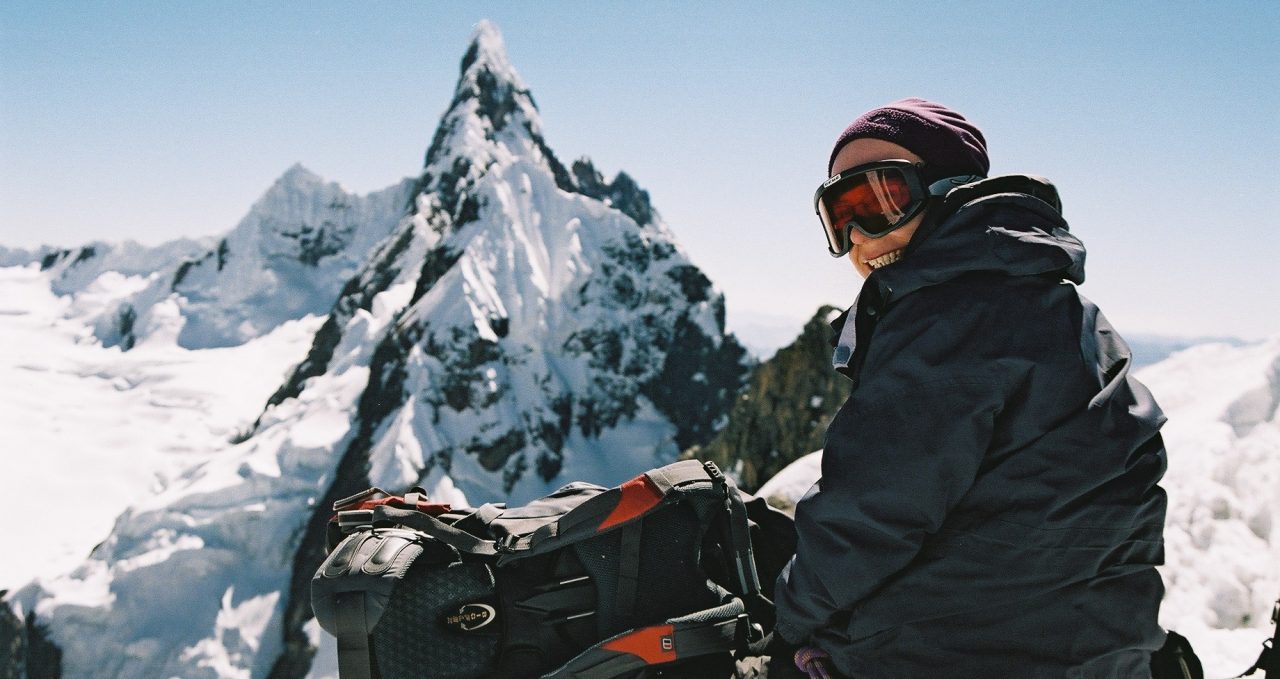
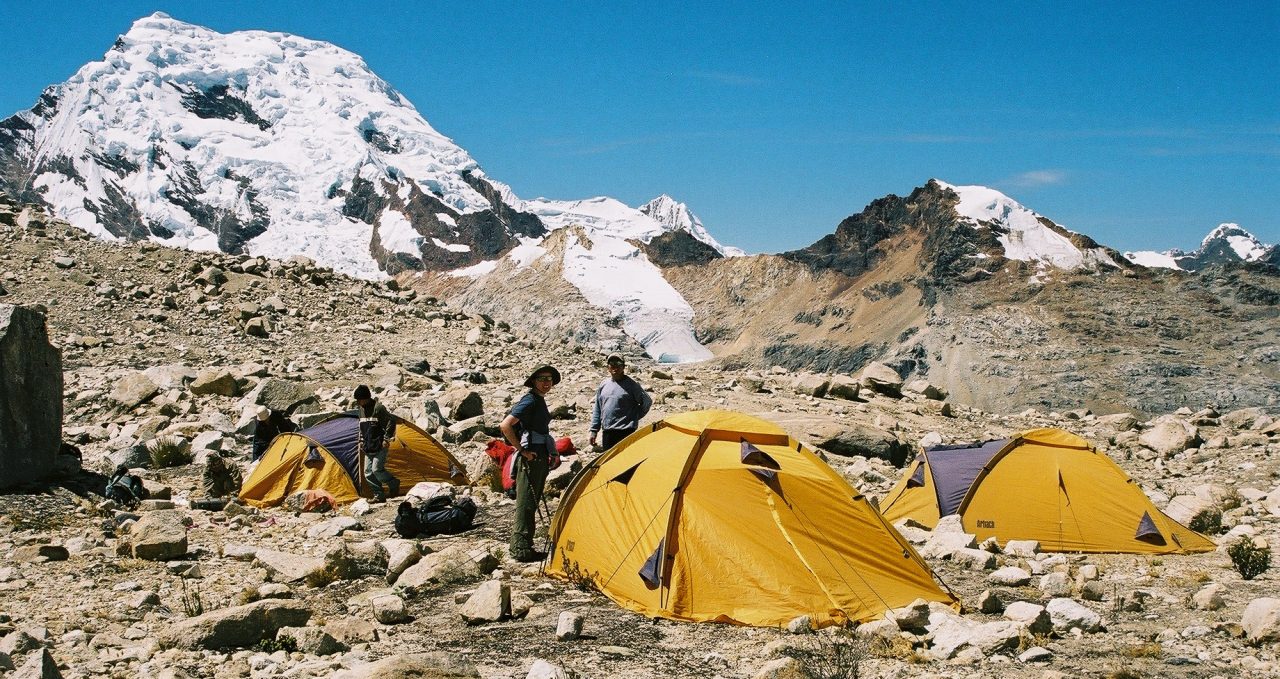
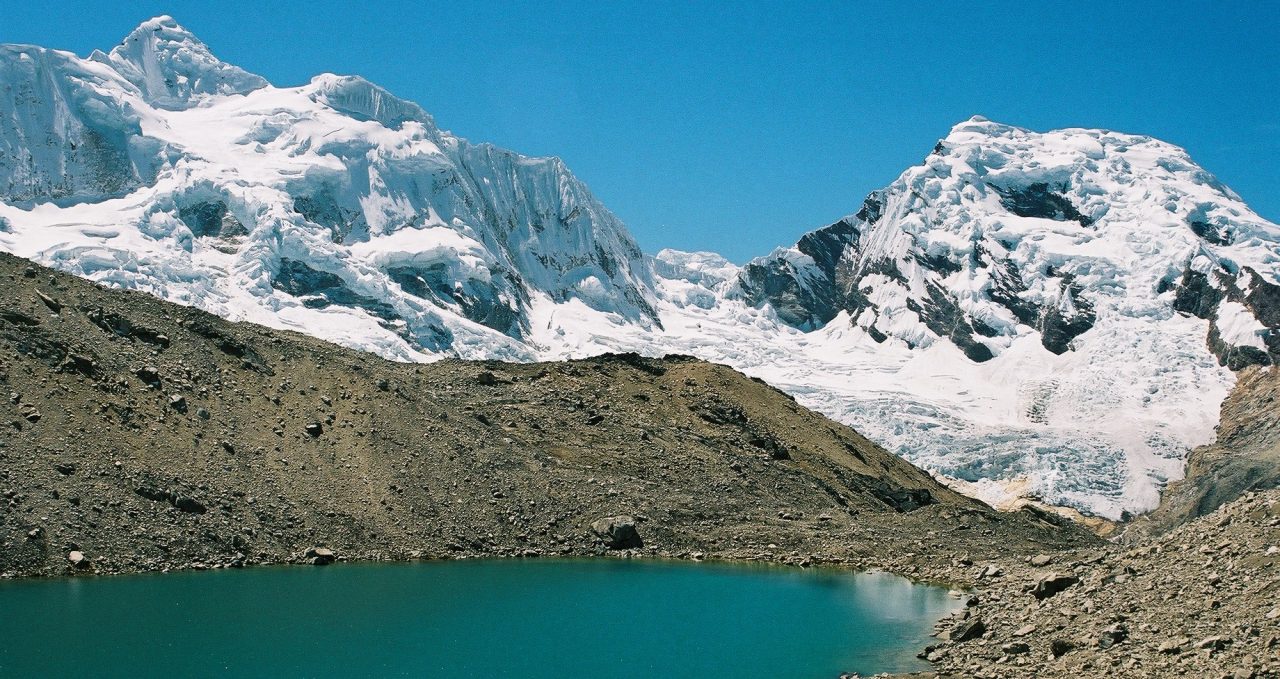
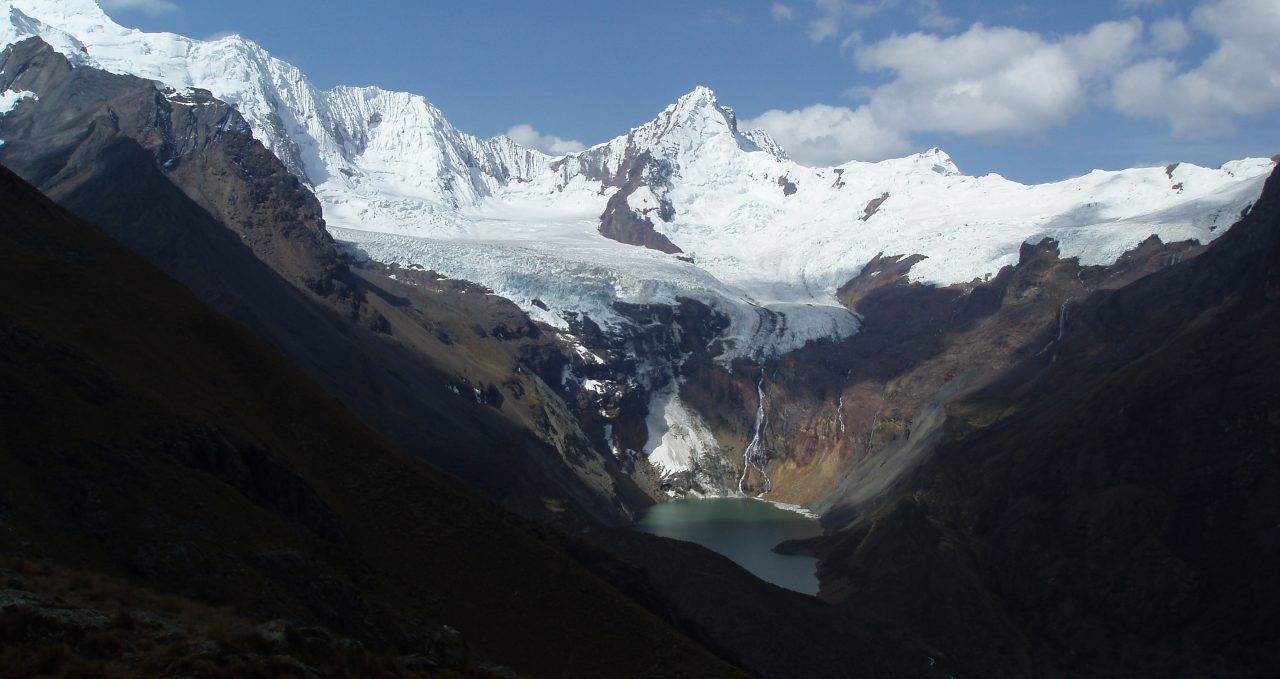
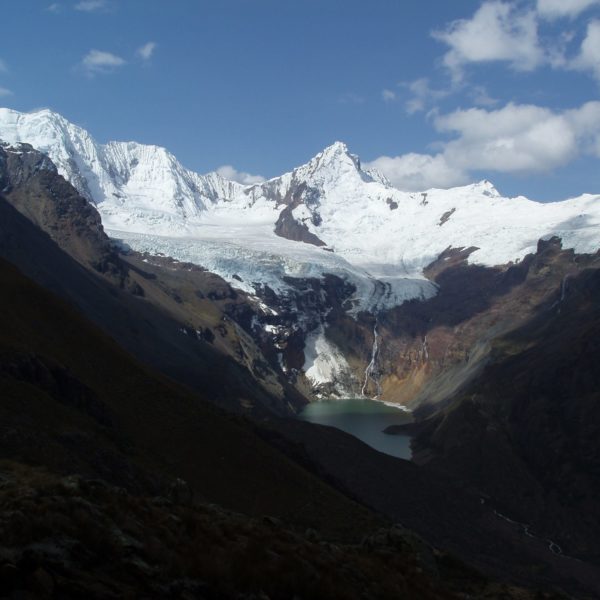
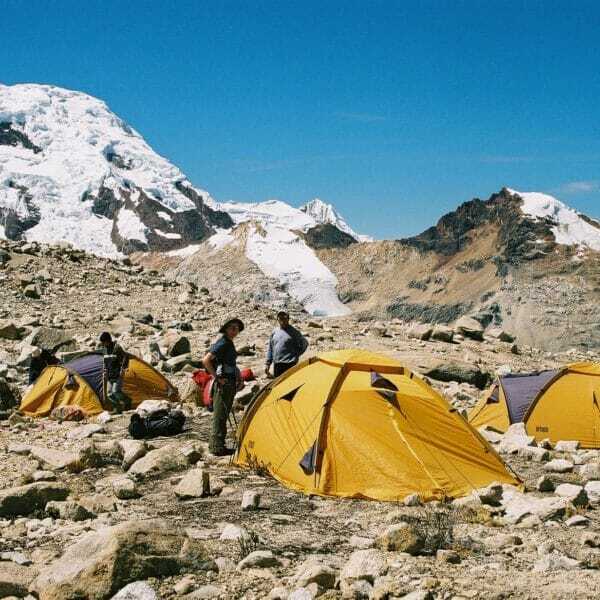
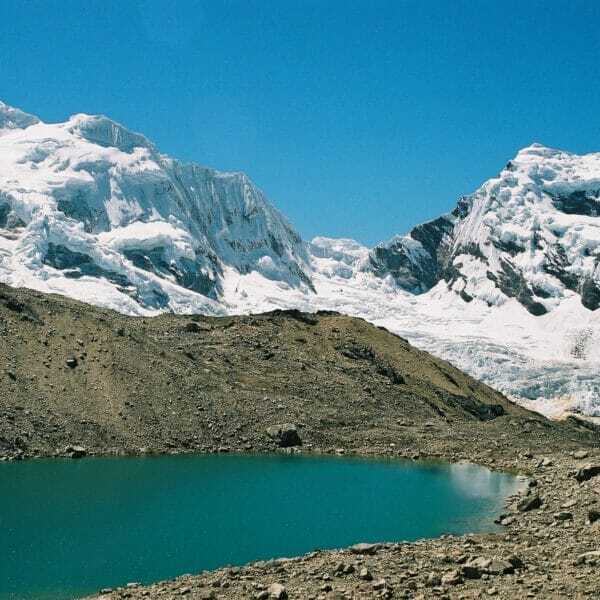
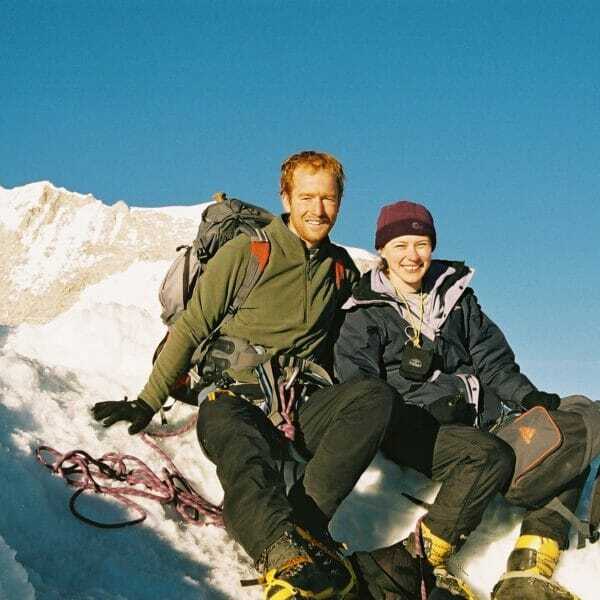
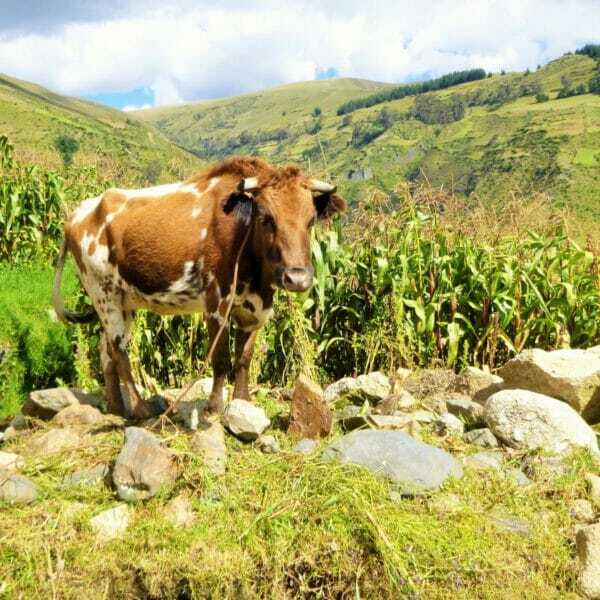
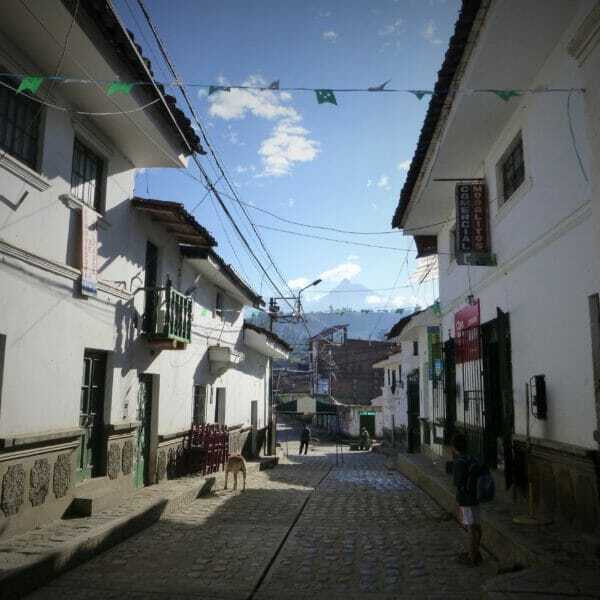
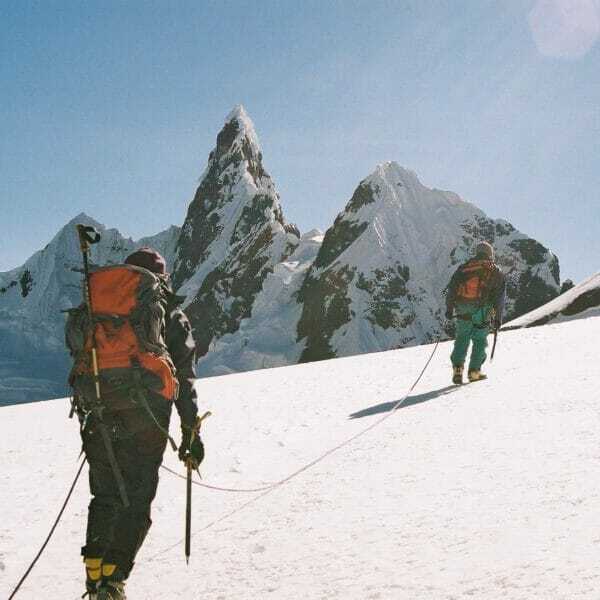
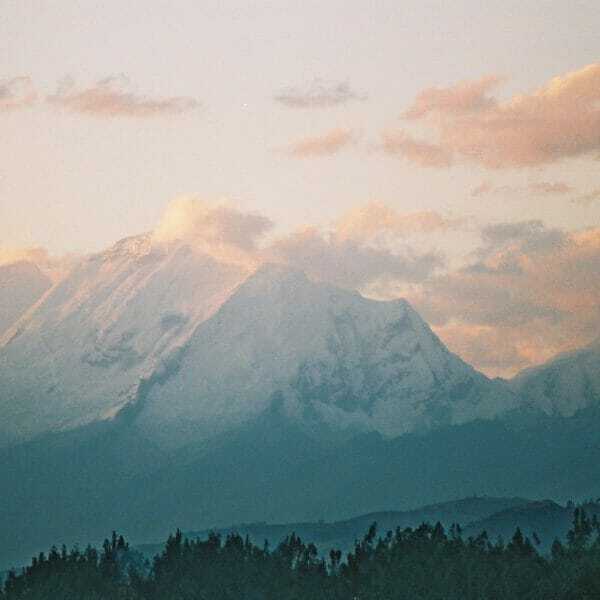
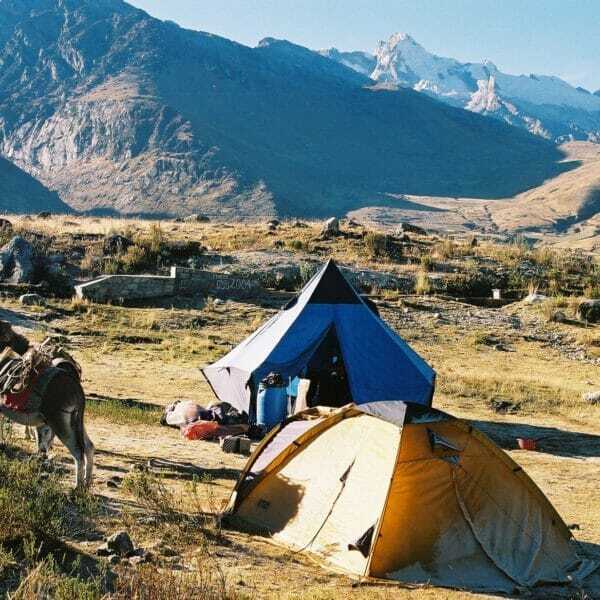
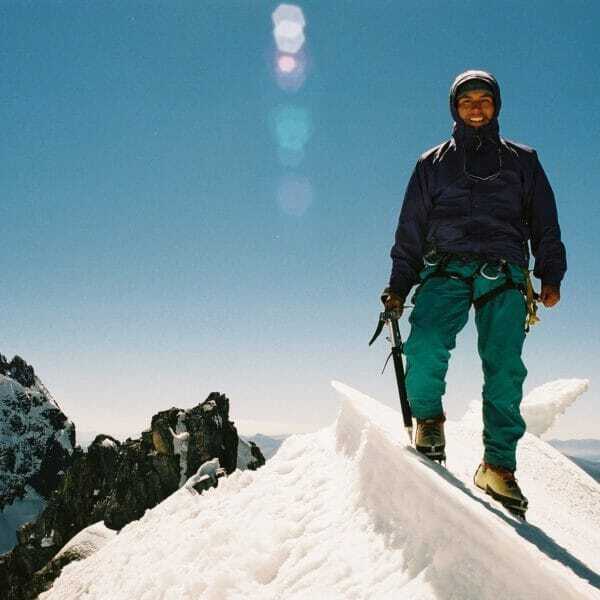
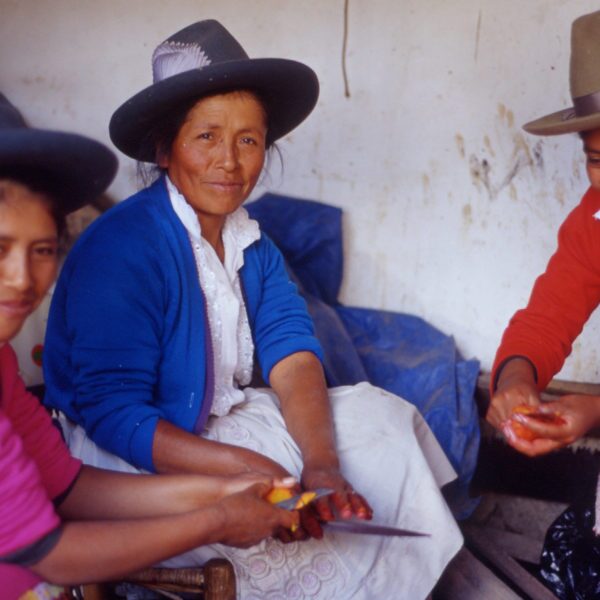
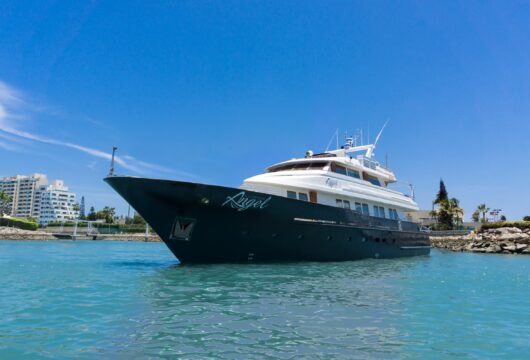
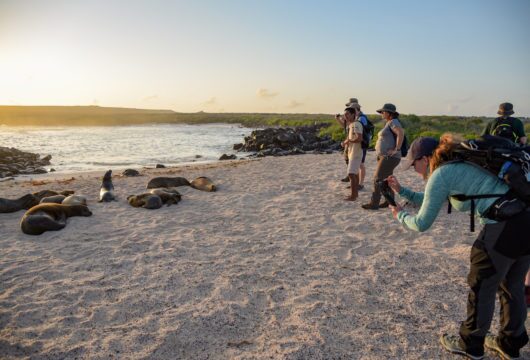
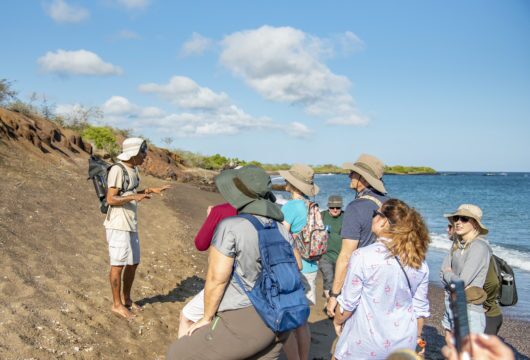
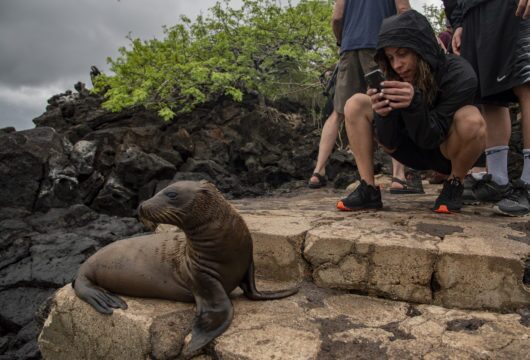
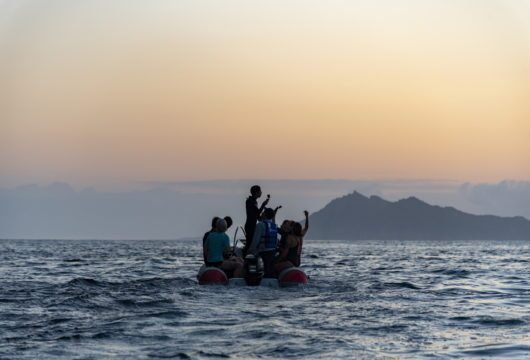
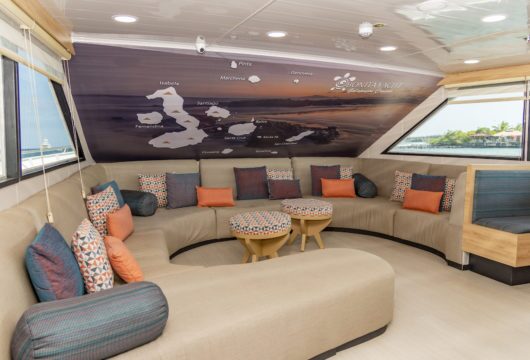
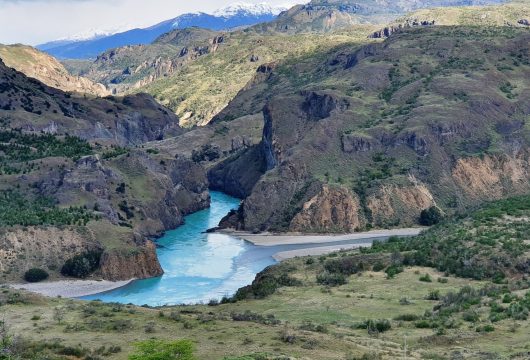
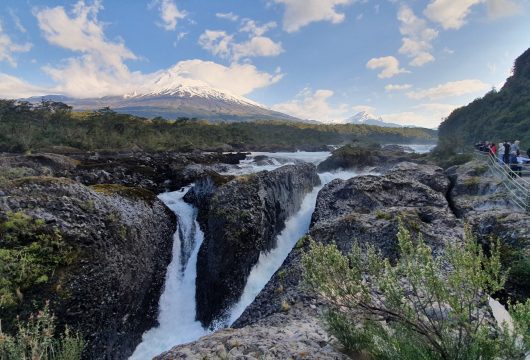
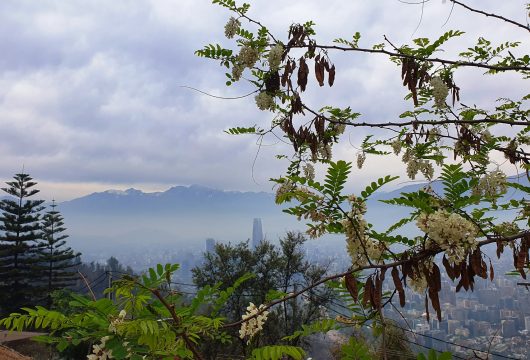
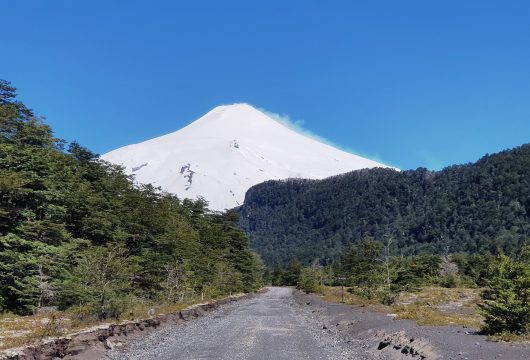
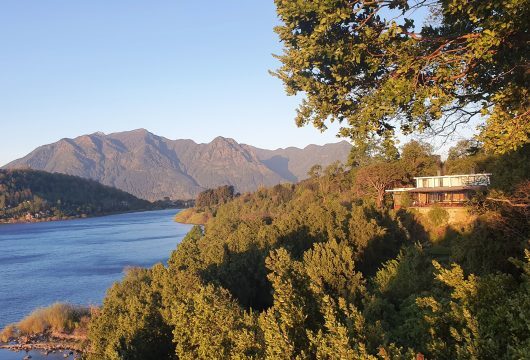
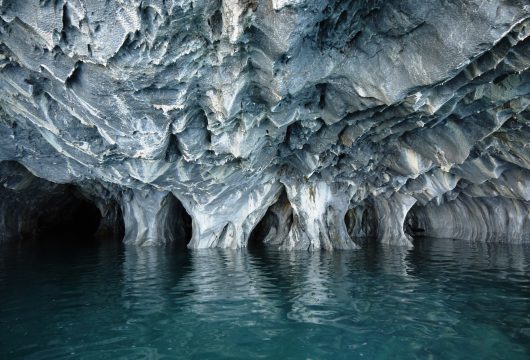
 a Group Tour
a Group Tour  a Tailor Made Tour
a Tailor Made Tour 